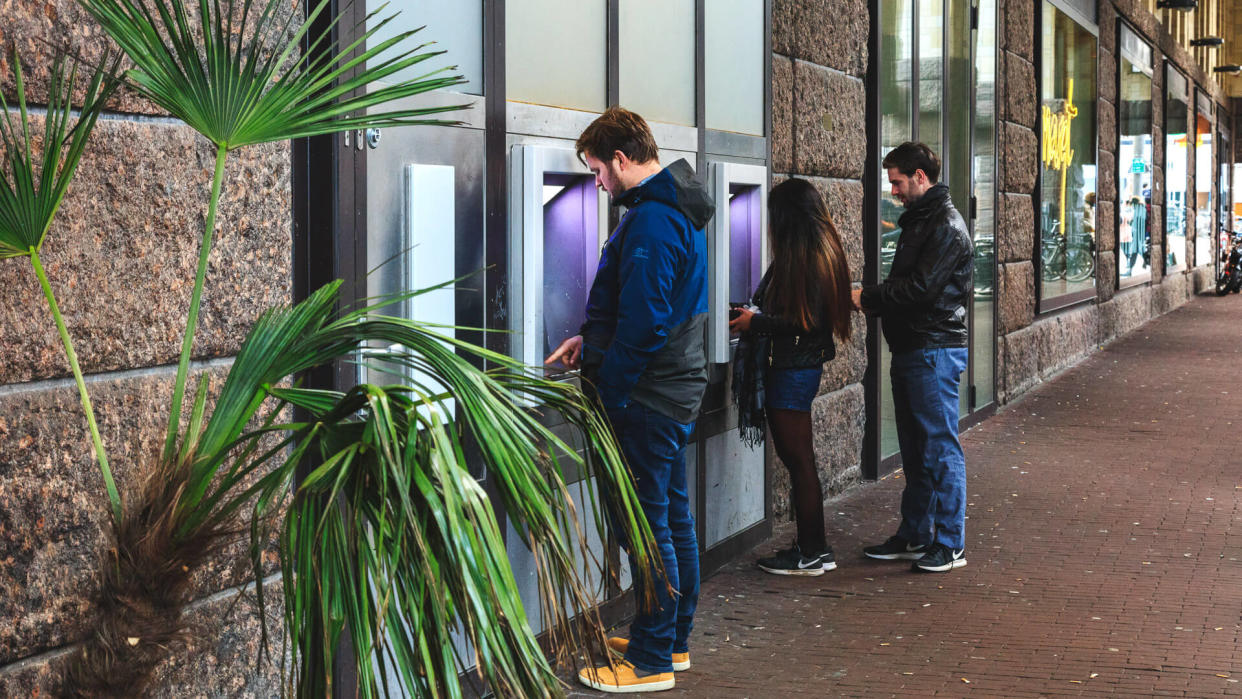What Is a Cash Advance on a Credit Card?

Difficult financial situations happen from time to time for most people, and it isn’t always obvious where to turn for help. Credit card cash advances can be an attractive option when you need money because they are typically quick and easy to obtain.
But despite their advantages, credit card cash advances can have some significant costs as well. It is important to understand what cash advances are all about and how much they could end up costing you before taking one out.
What Is a Cash Advance on a Credit Card?
A cash advance on a credit card allows you to access funds through your credit card account, but not for free. Cash advance transactions typically include very high interest and fees. However, the tradeoff is that a credit card cash advance allows borrowers to easily gain access to the funds they need, more quickly than other types of loans.
How Do Cash Advances on Credit Cards Work?
Credit card cash advances involve borrowing against a cash advance limit on your account. Note that with this method, there is a cash advance limit that is usually smaller than your limit for purchases, which typically equals up to 30% of your credit line. For example, if you have a $3,000 credit line, you could potentially access up to $900 as a cash advance.
You can find out your cash advance limit by looking at your credit card statement or calling your card issuer and requesting the information.
Additionally, the APR for credit card cash advances is often several percentage points higher than the APR for purchases and balance transfers.
And although there is a grace period for purchases, which requires card issuers not to charge interest for at least 21 days after the payment due date, there is no grace period for credit card cash advances. Unfortunately, these types of transactions start accruing interest immediately after you receive your money.
If you choose to get a cash advance on a credit card that already has a purchase balance, your card issuer might apply your payments toward your purchase balance first, which might have a lower interest rate than your cash advance balance. Check with your card issuer to find out how payments are applied in this situation. If you opt to take out a cash advance on your credit card, it’s best to use a card with a lower APR and without a purchase balance.
How Can You Get a Credit Card Cash Advance?
When using a credit card, you have different options for taking out a cash advance.
Credit Card Cash Advance Rates and Fees
As mentioned, you should consider the associated interest and fees if you are thinking about taking a cash advance from your credit card. Depending on the terms of the advance, these costs can be significant.
For credit card cash advances, for instance, the cash advance APR may be higher than that for balance transfers and purchases. Then, in addition to the higher APR, there is a separate cash advance fee you’ll have to pay.
Cash advance fees are typically 3% to 5% of the cash advance amount. Thus, a cash advance of $500 would result in a fee of $15 to $25, on average.
There are other fees you might encounter, too. For instance, if you request a cash advance at an ATM, there might be a fee. That could also be the case if you request a cash advance in a foreign currency, which could result in yet another fee.
Does a Cash Advance Hurt Your Credit?
Requesting a cash advance will not necessarily hurt your credit. However, it will raise your credit utilization, which could hurt your credit if it pushes your utilization too high. Generally, you should try to keep your credit utilization below 30%.
Alternatives to a Cash Advance
Instead of getting a cash advance, which might have a higher APR and a separate cash advance fee that you can’t avoid, here are some alternatives.
Personal loan from a bank.
Roth IRA, which allows withdrawals without taxes or penalties.
Cash advance apps with no fees or interest.
Is a Cash Advance Worth It?
If you consider the costs of a credit card or payday loan cash advance, chances are you’ll find that it’s not worth it. Instead, consider other alternatives that won’t cost you an arm and a leg to borrow cash. If you do opt to take a cash advance, make plans to pay it off as soon as you can because there is no grace period and interest starts accruing right away.
Cash Advance FAQ
Here are the answers to some of the most frequently asked questions about cash advances.
What is an example of a cash advance?
The most common form of a cash advance is a credit card cash advance. With this type, you ask your card issuer to extend an advance of cash to be paid back later. For instance, you might request a $250 advance from your card issuer. Keep in mind that there will be a cash advance fee, and most credit cards have a cash advance APR that is higher than the APR for purchases.
Is a cash advance a loan?
Yes, a cash advance is a loan. Another term for this is a line of credit, which you might see used with your credit card. However, all of these are just terms used to refer to different types of loans.
Cynthia Measom contributed to the reporting for this article.
This article originally appeared on GOBankingRates.com: What Is a Cash Advance on a Credit Card?
